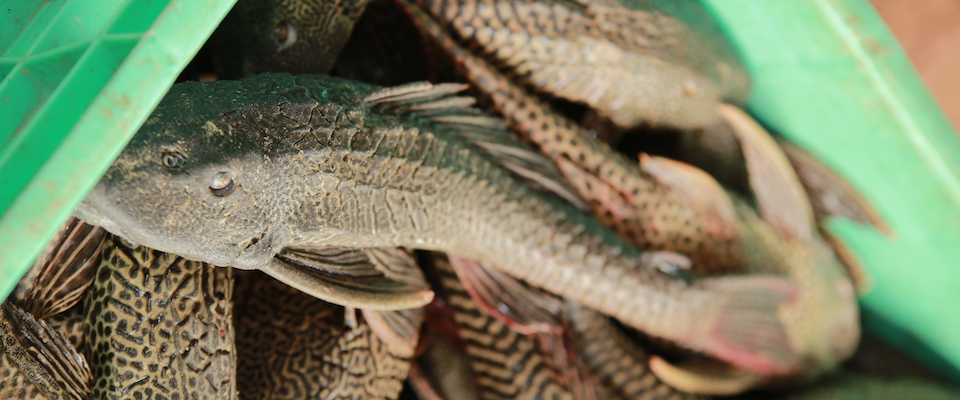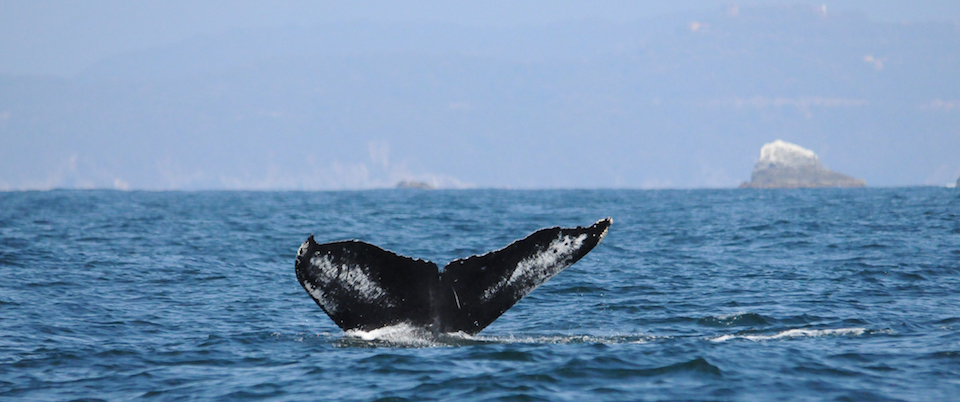It’s as ugly as a box of rocks and a literal scum-sucker to boot. But don’t judge a fish by its exterior: The dietary proclivities of the South American armored catfish excite aquarium hobbyists, who employ the homely bottom feeders to hoover up the algae and slime that accrete to their tanks.
People can get attached to fish. So when the time comes to downsize to a smaller apartment or the rigors of maintaining a tank full of Tetras pall, it’s understandable that the toilet option is resisted. It’s then that the “Nemo Effect,” as biologists call it, takes hold. Instead of flushing their finny charges, fish owners often discharge them to the nearest lake or creek, hoping they’ll find a new and happy vocation in the wild.
And all too often they do. With a vengeance. In Mexico, the Nemo Effect is thought responsible for the wildfire expansion of armored catfish—known locally as pez diablo, or devil fish—to practically every fresh and brackish body of water in the country, from estuaries to stock ponds. First discovered a couple of decades ago in a reservoir in Michoacán, they now range from the state of Tabasco to Texas. And in the process, they’re displacing commercially valuable species, such as moharra (tilapia) and robalo (snook).
“If you go to a lagoon or river in Tabasco and throw a net, you can come up with 50 to 100 kilos of devil fish in one cast,” observes Mike Mitchell, who used a Fulbright fellowship to investigate aquaculture issues in Mexico. “I was there to look into fish farming, but every conversation I had always seemed to come back to devil fish. Despite multiple attempts [by both the government and private parties], fish farming has never really caught on. Fish production still relies on fishermen exploiting wild stocks.”
Moreover, there are too many fishermen competing for too few fish, says Mitchell. While in Tabasco, he observed that juvenile gar, snook, and tilapia were being sold at the markets.
“In fact, most of the desirable species being sold were juveniles,” says Mitchell, who recently earned his Master’s in international development from Cal. “It’s the tragedy of the commons. Everybody is competing for an ever-shrinking resource base, and the situation is exacerbated by the explosion in devil fish. They account for about 90 percent of the catch in many locales, and the fishermen view them as worthless.”

It occurred to Mitchell that there may be a silver lining in all that under-utilized biomass. If you can’t beat devil fish, he thought, why not eat them? Or more accurately, beat them by eating them? The problem, of course, was market perception of the fish. They certainly didn’t look appealing when arrayed on ice in a fish market, and the fillets could cook up into grayish, rubbery slabs. In short, they had a long way to go before they could compete with salmon, Chilean sea bass, pompano—even regular old farm-raised catfish. But they had one thing going for them: numbers. Unlike snook or gar, there were plenty of them.
So Mitchell began brainstorming with fellow international development Master’s grad Sam Bordia about possible devil fish initiatives.
“We realized we had to come up with some way to make them more appetizing,” says Mitchell. “Unlike most fish, they have a lot of hemoglobin in their flesh—that contributes to their toughness when you cook up the fillets. They don’t turn flaky and tender like sole or tilapia, for example. So we had to figure out approaches that turned that quality to our advantage.”
Working with local chefs in Tabasco, they tried different approaches. Grinding up the meat worked well, yielding a product that could be formed easily into patties. Plus—perhaps something of a surprise, considering the fish’s saurian and decidedly less-than-toothsome appearance—it was tasty when served up as a burger.
“Unlike most fish from warm, fresh water it didn’t have that muddy taste,” says Mitchell. “It tastes like—well, chicken. So we began donating fish to Las Patronas, an organization in Mexico that provides food to Central American immigrants who ride The Beast, the train that travels north to the U.S. border. But fish burgers don’t exactly travel well, so we wanted to develop a product that would keep, that they could take on the train. We experimented with canning and smoking, but neither seemed like the right solution.”
Then Lupita Vidal, a Tabasco chef who advises the team, suggested drying the devil fish.

“She had a small dehydrator that she lent us, and we started experimenting,” said Bordia. “We decided to try for some jerky, and the first run went way better than we expected, though we used a bit too much chili. It made us cry. But the flavor profile and texture was a lot closer to beef than the other fish jerkies out there.”
The partners also had to work with locals to develop a reliable system for catching and processing the fish. The second part was particularly tricky: Armored catfish don’t have scales, and they don’t skin easily, as is the case with more familiar catfish species.
“We had to figure out how to fillet them, then teach that technique to the workers,” says Mitchell. “Devil fish have what amounts to a hard exterior shell, but they have a weak spot behind the dorsal fin. You stick your knife in there, move it along the spine toward both the head and the tail, then peel the fillet off the skin. It makes a sound like peeling an orange.”
The two men took samples of their product up to the States and received uniformly positive responses. People liked the taste, the fact that the jerky was made from fish rather than red meat, and that it was sustainably sourced. From there, Acari was born: a start-up dedicated to all things devil fish. The company sells frozen devil fish fillets, but Mitchell observes that market niche “is really competitive, really crowded.” So they’re placing their main hopes on jerky for now, with eventual plans to expand into other processed products, such as fish balls, fish “hamburger,” and gumbo additives.
While they toyed with the idea of building their own dehydrating and processing facility in Mexico, they ultimately deep-sixed that option. The expense was too high, and the red tape far too daunting.
“We also wanted to work with an established dehydrator in Mexico, but they mainly concentrate on fruits and vegetables,” says Mitchell. “They don’t really ‘get’ jerky. So instead, we contracted with a very large processor in the U.S. who makes jerky for a lot of people. So now we get fish from our suppliers, take it to a giant cold storage facility we’ve rented in Mexico City’s main seafood terminal, then ship it frozen to our U.S. processor.”
Acari plans to commercially launch its “El Diablito” jerky line in a couple of months, offering three flavors: teriyaki, spicy citrus, and a mystery formula that’s still being fine-tuned. Bay Area’s big tech firms are among the markets they’re developing.
“We’ve been talking to folks in corporate kitchens, the people who supply the meals and snacks for all the workers,” says Bordia. “We found that employees had a general disdain for the jerkies their companies had in their pantries. So that seems like a natural entry point for our launch. We also plan to sell online.”
The partners believe their product line can be scaled to meet any demand. They can expand their processing facilities as needed, and the basic feedstock—devil fish—is for all practical purposes inexhaustible, at least for the foreseeable future.
“There’s no shortage of invasive fish,” observes Mitchell, citing Asian carp, the big, silvery, algae-gobbling fish that is taking over waterways throughout the Mississippi drainage. “We don’t know if any other species are as suitable for jerky as devil fish, but there are probably other ways of consuming and monetizing them.”




















